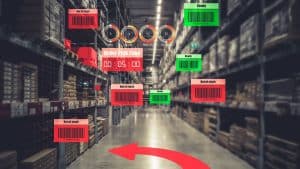EasyFlow collaborated with the Mobility Innovation Center and AB Lietuvos Geležinkeliai (Lithuanian Railways) to conduct a pilot study on ten local trains.
The study aimed to evaluate the effectiveness of a computer vision-based software solution for measuring passenger flows, augmenting passenger management, and enhancing ticket validation processes.
Conducted in February, the pilot utilized existing video surveillance systems to capture and analyze passenger data, offering insights into traffic patterns, compliance rates, and operational efficiencies.


Introduction
The pilot study was initiated to explore the potential of integrating advanced AI-driven computer vision technology into the public transport sector to improve service quality and optimize business processes.
The software developed by EasyFlow was designed to analyze video footage from train carriages, counting and categorizing passengers based on their actions and attributes, such as entry and exit behaviors, accompanying children or animals, and handling of bicycles and bulky items.
Objectives
The primary objectives of the pilot study were to:
- Measure the accuracy and reliability of the computer vision software in counting and categorizing passengers.
- Integrate passenger flow data with ticket sales records to assess discrepancies and enhance compliance with ticketing requirements.
- Evaluate the operational benefits of real-time data analysis for improving train scheduling and capacity management.
- Assess the potential scalability of the solution across other mass transit systems.
Methodology
Deployment
The computer vision software was installed to interface with the existing CCTV infrastructure on ten local trains.
Data was collected across various times of day and on different routes to ensure comprehensive testing environments.
Data Collection and Analysis
Video data was processed in real-time by the software, which utilized advanced algorithms and deep learning models to identify and categorize each passenger.
Data points such as passenger counts at each stop, specific categories of passengers (those with bicycles, children, or animals), and entry/exit times were recorded and analyzed.
Integration with Ticket Sales
The collected data was cross-referenced with ticket sales records to identify patterns in ticket usage and pinpoint instances of fare evasion.
Stakeholder Feedback
Feedback was solicited from stakeholders at the Mobility Innovation Center and operational staff at AB Lietuvos Geležinkeliai to gauge the system’s impact on operational practices and passenger experiences.
“This experiment helps to evaluate the use of AI for optimization of business processes for companies in the public transport sector, as well as to improve the quality of services for the passengers. This technology can be easily introduced in any kind of mass transit system and it will become a standard tool of choice in the near future”.
– Expert of Mobility Innovation Center Kęstutis Vanagas.
Results
The pilot study revealed several key outcomes:
- High accuracy in passenger counting with over 95% precision in diverse conditions.
- Identification of significant rates of fare evasion, particularly during peak travel times.
- Positive feedback on the potential of the system to enhance service delivery and compliance.
- Identification of operational adjustments needed to optimize passenger distribution and train scheduling.
Conclusion
The findings from the pilot indicate that computer vision technology can significantly enhance the management of passenger flows in public transport.
By providing real-time, actionable data, the system allows for better resource allocation and service planning.
Additionally, the technology’s ability to scale and adapt to various environments suggests its applicability across multiple sectors within the public transportation industry.
Curious About The Above Solution?
Chat with Vejūnė and explore your possibilities without any commitment.


Vėjūnė Krašinskienė
Chief Operating Officer
Book a no-obligation free consultation with our expert.


